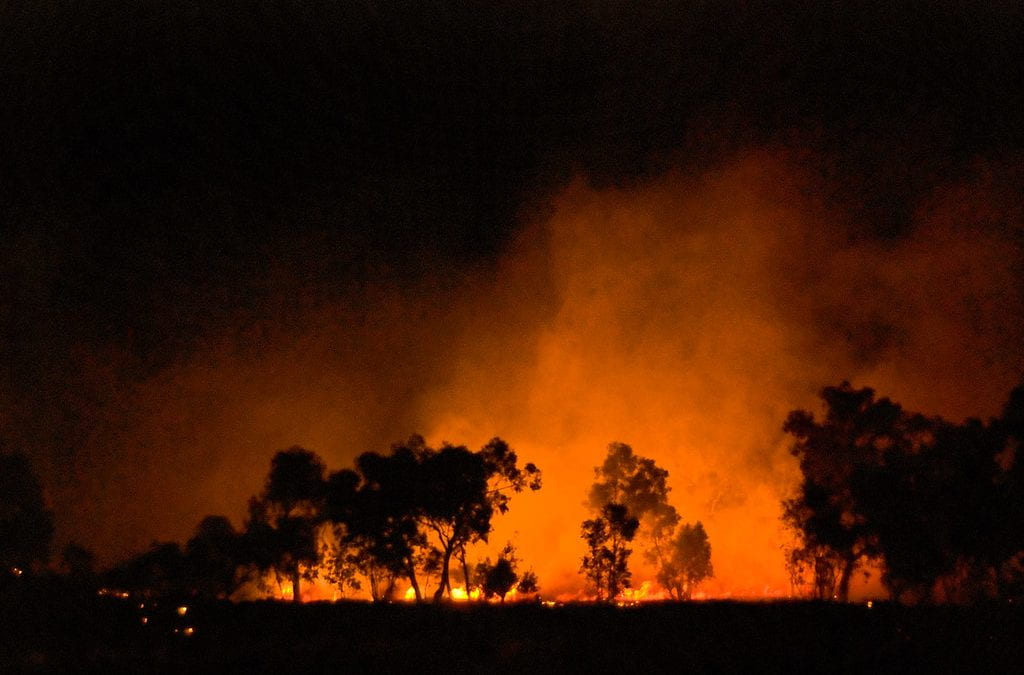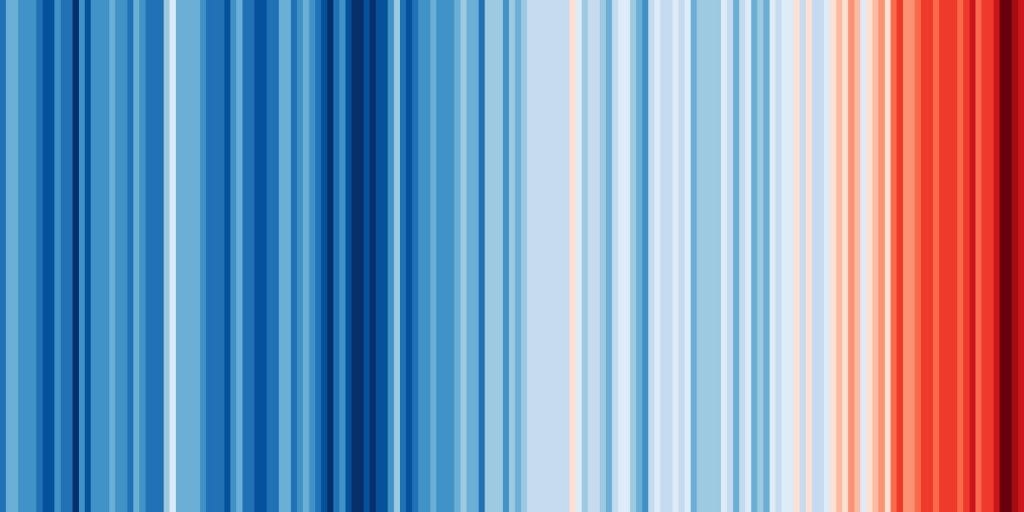By George Perry
George Perry explains the uptake in wildfires globally and how we can adapt to our changing environment.
Australia. California. Mediterranean Europe. Alaska. Greenland. Each week there seem to be news reports describing unprecedented fire events in another part of the world. These reports are often associated with heated debate about the underlying causes of these fire events. Are they exacerbated by the climate emergency? What about fuel management? Are patterns of urbanisation and land-use change problematic? Is fire becoming more frequent or extreme? Over the last 2000 years, fire activity has varied with a decline until 1750, and a dramatic increase during the Industrial Revolution. However, analysis of remotely sensed imagery shows that over recent decades burned area has declined significantly across the globe (approx. 1.5% per year), especially in Africa, where fire activity is concentrated. This decline is the result of fewer fires rather than a change in mean fire size. Understanding the changing place of fire in the earth system is a key question for global change science. Changes in any part of the fuel-oxygen-heat ‘fire triangle’ are likely to alter patterns of fire activity. A challenge in understanding how environmental change will influence fire is that its drivers are deeply intertwined in complex webs of feedbacks. So, what is happening to patterns of fire activity?
Global annual average temperatures from 1850-2018 using data from the UK Met Office. Visualisation from the ShowYourStripes project [https://showyourstripes.info/]. Blue colours show lower temperatures and red colours higher temperatures.
Fire as a natural component of ecosystems
During combustion fuel is oxidised to heat, light and other by-products, which requires the presence of flammable fuels, a heat source and oxygen. Plants colonised the land potentially more than one billion years ago, and charcoal has been present in the fossil record since atmospheric oxygen levels became sufficient to support combustion (the oldest known charcoal dates to some 440 million years ago). Because of fire’s long history in the biosphere, it has been important in the evolution of plants and animals. Plant species show a range of adaptations to fire: thick insulating bark, cones designed to release after fire, seeds whose germination is triggered by smoke, underground storage organs that resprout after fire, and more. In short, fire is a natural part of many ecosystems and in some plays an important role in maintaining local biodiversity. However, plant and animal species are not adapted to fire per se but to repeated patterns of fire (how often? when? where? how hot [intensity]?); these patterns are what ecologists call the ‘fire regime’. Thus, either increased or decreased fire activity can negatively affect ecosystems, depending on environmental context. For example, in plant species where seeds are stored in cones that open after fire, if fire is too frequent there will not be sufficient seed accumulation between fires (leading to the species decline), but if fire is too infrequent plants will release seeds into environments where seedling survival is low due to competition with established plants (again, leading to declines).
How does climate affect fire activity?
Fossil pollen and charcoal show that past changes in climate have been associated with changes in fire activity. As conditions become drier and warmer, as is being documented in many ecosystems, fire is expected to become more frequent and potentially change in seasonality. A recent analysis of nearly 500 of the most intense (high energy release) fire events using remotely sensed data, concluded that they were consistently associated with extreme fire weather (prolonged hot, dry, windy conditions). The relationship between climate and fire is not simply that the former drives the latter. Biomass burning is an important source of emissions associated with climate warming. Alongside C02, fires release brown and black C, which are effective agents of warming and have been dispersed across the planet as far as the ice-fields of the poles (where they reduce the reflective properties of those surfaces). Burning also changes terrestrial albedo (reflectance of the land surface) with further implications for climate due to the absorbance of heat. However, the contribution of biomass burning to climate emissions varies with environmental context; although fire activity is concentrated in Africa, burning of peat (soils comprising at least 50% undecomposed organic matter), as has occurred in SE Asia and in some boreal regions, is a key contributor to burning emissions. The interactions between climate and fire are complex and dynamic, and many remain uncertain.
Changing vegetation influences fire activity
Vegetation is changing in many ecosystems, which can either increase or decrease fire risk. In parts of the SW USA invasive grasses (such as cheat-grass) have transformed shrubland ecosystems by connecting isolated plants together and thus helping fires to spread. Elsewhere changes in vegetation and land-use practices have also resulted in shifts in fire activity. The global decline in fire activity over the last 20 years is believed to be the result of urbanisation in Africa with associated changes in vegetation and the use of fire as a land management tool. Such changes can be deleterious for fire-dependent ecosystems such as savanna, which, in the absence of fire, can become more woody (i.e. dominate by trees). The relationship between fire and vegetation is not just one-way. As with climate, in some ecosystems there are feedbacks between fire and vegetation such that the vegetation that appears following fire is more flammable, potentially setting up a ‘fire begets fire’ cycle. This type of dynamic has been described in shrublands invaded by grasses, is an important component of loss of tropical rain forest in Amazonia and SE Asia, and is associated with landscape transformations in parts of Patagonia and New Zealand. In some ecosystems, such as New Zealand, these invasive plants carry with them fire adaptations absent in the native flora that given them distinct advantages as fire activity increases. On the other hand, recent work has shown the potential for green firebreaks – that is, strips of low flammability vegetation strategically positioned to impede the spread of fire and providing other ecological benefits such as habitat provisioning. Likewise, individual homeowners can help to reduce fire damage by maintaining low flammability ‘defensible spaces’ around their properties.
Changes in patterns of ignition
Ignition is the final component of the fire triangle. Lightning is the most important natural ignition source, and its prevalence varies across the globe, with some areas (e.g. parts of Africa and South America) receiving more than 200 strikes per km2 per year, and others less than one (parts of New Zealand). The association between humans and fire is ancient, with the ‘domestication’ of fire considered to be a key-step in our species development. In many parts of the world humans are now the prime source of ignition, whether this is deliberate (e.g. for land clearance or arson) or accidental. While in some ecosystems human activity has dramatically increased fire activity in others it has greatly reduced it. The patterns of ignition associated with human and non-human sources are likely to differ in time and space, and this affects patterns of fire activity. Climate change may also influence ignition. While the effects of climate change on lightning frequency are debated, there are ecosystems where lightning patterns seems to be shifting. For example, the devastating 2016 fire events in the World Heritage area of Tasmania (which were so severe they burned soils that took millennia to accumulate) were caused by a period of very high frequency dry lightning events. Likewise, large wildfires in Alaska in 2015 have been attributed to increased lightning activity. Changes in human activity and behaviour will also affect ignition patterns.
A fiery future?
For humans the wildfires of most immediate concern are those threatening human life, well-being and infrastructure. A recent analysis based on newspaper reports and remotely sensed imagery suggests that these events are clustered in south-eastern Australia and the western USA. In these environments, extreme fire weather conditions are predicted to become between 20 and 50% more frequent under climate change. However, fires are also likely to occur at times and places where they have been rare in the past. In 2016 a nearly 2000 ha fire burned the Port Hills of Christchurch (NZ); although small on the global scale in terms of absolute area burned, it equated to nearly 50% of the long-term annual burned area in NZ (just over 4000 ha). In 2017 Greenland experienced the largest fires ever recorded there, including the 2500 ha event north of Sisimiut in peatland rendered flammable as permafrost thawed. Again, this is not a large area on a global scale, but is unprecedented for this region and resulted in c. 7 tons of black carbon being deposited on the Greenland ice-sheet. Likewise, the catastrophic (Austral spring-summer 2019) fires in Australia occurred earlier in the fire season than had been historically the case, and have resulted in unprecedented burn sizes. Whether individual events are the direct outcome of climate change is impossible to determine, but changes in average climatic conditions and in climatic variability make such events much more likely.
Adapting to a ‘fierier’ world will be challenging. Simply managing fire out of the landscape is not feasible, and may have unexpected and perverse ecological and social outcomes. While there is a place for management interventions such as fuel thinning and fuel reduction burning (prescribed fire) they are unlikely to be in themselves sufficient in the face of the current climate emergency and changes in urbanisation and land-use practices. Thus, fire management approaches need to be expanded to address the challenges posed by some of the flagship challenges of the Anthropocene: the climate emergency, habitat loss and invasive species. If we are to meet the challenges fire poses, we need to foster a flexible and forward-looking social and ecological resilience, and accept that in many landscapes changes in fire activity mean that historic ecosystem conditions may not be able to be maintained.
George Perry is a Professor in the Environment at the University of Auckland. He is an expert in forest ecosystems and fire ecology.
Disclaimer: The ideas expressed in this article reflect the author’s views and not necessarily the views of The Big Q.
You might also like:
What are the public health and environmental impacts of wildfires?
What are tipping points and what do they mean for our ecosystems? 🔊


